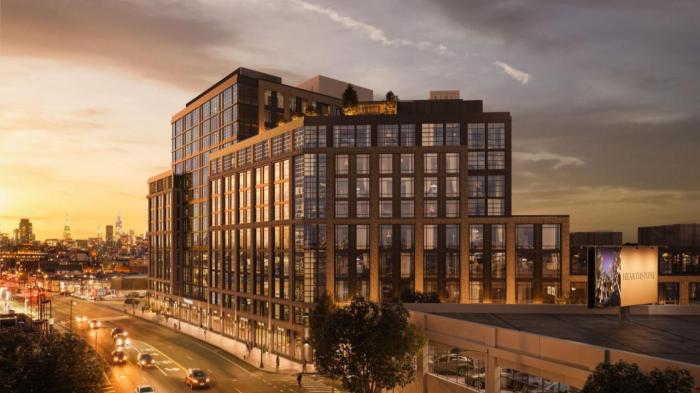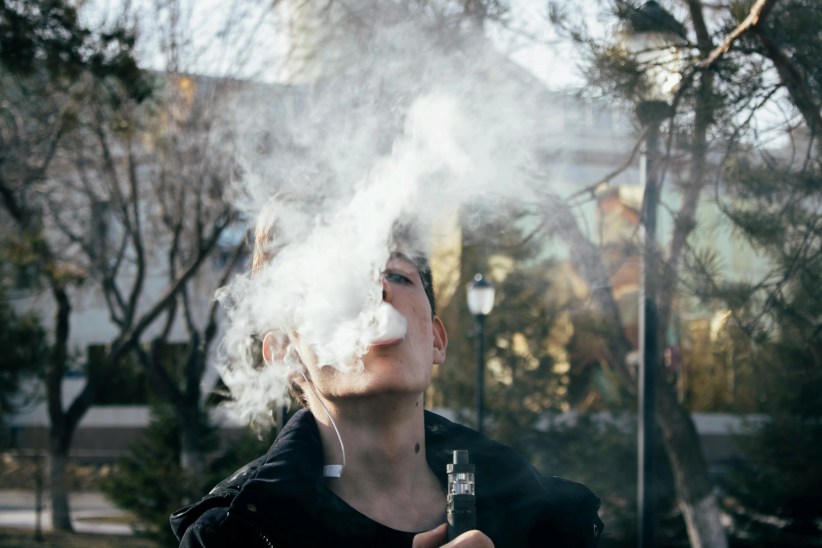About three dozen western Queens community members joined Queens Climate Project for a bike ride and rally from Jackson Heights to Astoria, in order to raise awareness about existing peaker plants in Astoria and protest NRG’s current proposal, on Sunday, Oct. 25.
Queens Climate Project, a group of Queens residents that advocate for the implementation of clean energy, organized the event to gain more support for green, renewable energy from western Queens communities. The event began at Diversity Plaza in Jackson Heights at noon, where a group of children, parents and individuals got on their bikes to ride toward Astoria.
Local elected officials joined in throughout the route, including State Senator Jessica Ramos, Assembly candidate for District 34 Jessica González-Rojas, City Councilman Jimmy Van Bramer and City Council candidate for District 22 Tiffany Cabán.
The group biked on Broadway toward 46th Street, then 34th Avenue and turned onto 21st Street. They then made a brief stop at Vernon Boulevard and 44th Road.
Anthony Ng, a member of Queens Climate Project, pointed to two peaker plants along the waterfront: the Vernon Boulevard Power Plant, located at 42-30 Vernon Blvd., and Ravenswood Generating Station, located at 42-30 Vernon Blvd.
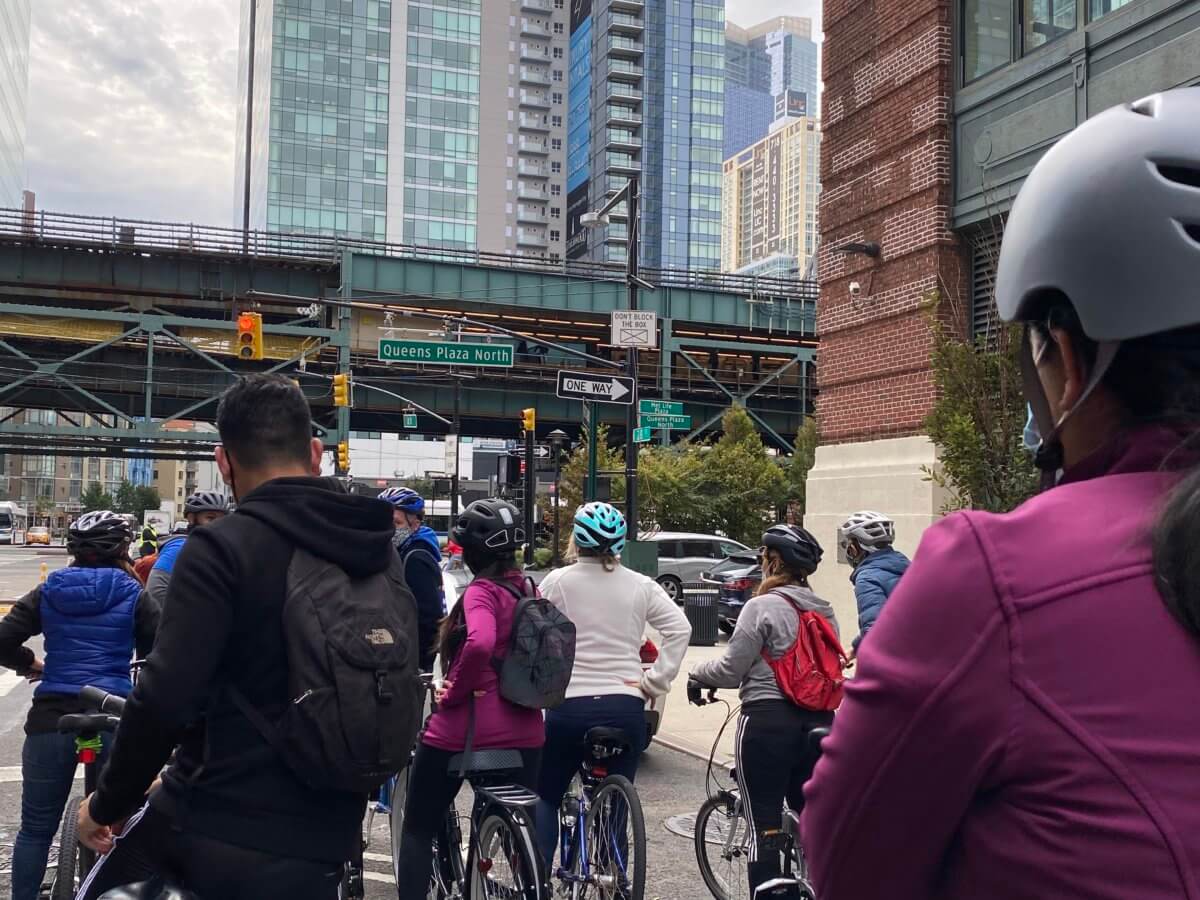
Last year, Ravenswood Generating Station announced it will develop an energy storage facility on its property, which will hold enough electricity to power more than 250,000 households over an eight hour period. It will be partially operational by March 2021, and will provide peak capacity, energy and ancillary services, offset more carbon-intensive on-peak generation while enhancing grid reliability in the five boroughs, according to the owners.
Earlier this month, the New York Power Authority (NYPA), which owns Vernon Boulevard Power Plant, signed an agreement with PEAK Coalition, a group of environmental justice and clean energy advocates, to study ways to replace New York’s six natural gas peakers with renewables, battery storage or other technology in order to reduce or eliminate emissions.
Ng said NYPA and Ravenswood Generating Station show “what’s possible.”
“We see here along the western Queens waterfront, two of the owners of these dirty peaker plants, looking to convert to clean energy alternatives, looking to replace them with renewable technologies and essentially cleaning the air here,” said Ng. “You have these owners looking to do the right thing, making the air cleaner, helping us to transition into a renewable energy future, and then when we end up in Astoria, the owners there, NRG, they’re looking to re-power their plant with fossil fuel source.”
There are several types of power plants, but the traditional ones convert fossil fuels (such as coal, natural gas and oil) into electric power. Peaker plants are known as power plants that run when there is a high demand for electricity.
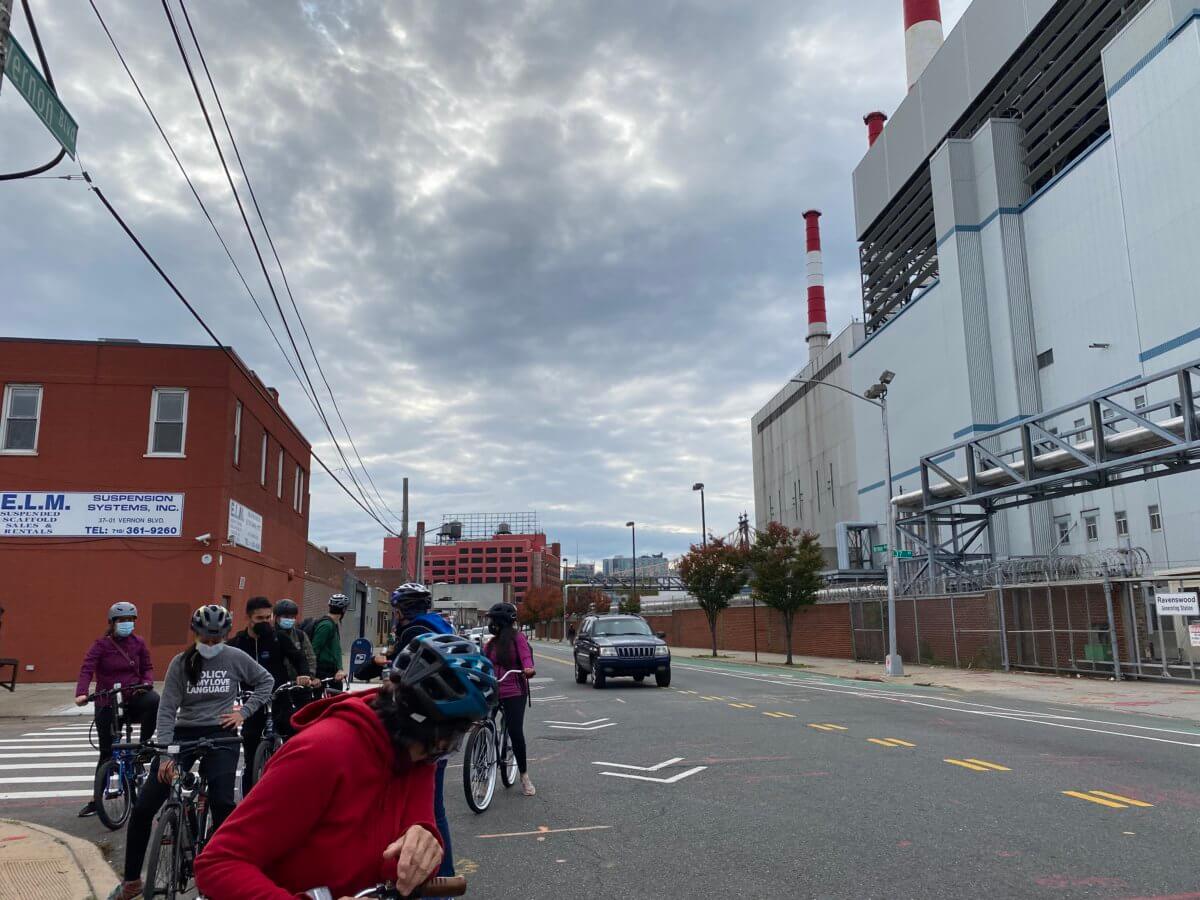
The chilly, gray Sunday allowed for a mostly tranquil bike ride — with the exception of one car driver who yelled at the group to use the bike lane.
After passing by Astoria Generating Station, located at 31-01 20th Ave., the group stopped at the corner of 31st and 20th Avenue to talk about why they are against NRG’s proposal to upgrade their existing power plant.
NRG, a large fossil fuel company involved in energy generation and retail electricity, is seeking approval from the State’s Department of Environmental Conservation (DEC) to replace and upgrade existing generators there.
An NRG spokesperson previously told QNS the project is meant to “replace 50-year-old turbines with state-of-the-art technology, which will reduce on-site air emissions by up to 99 percent per hour — meaning cleaner air, lower emissions and reliable power when New Yorkers need it most.”
Shay O’Reilly, New York City organizer of the Sierra Club, a national environmental nonprofit, said the project is part of a 10-year-old application.
“Their power plant is reaching the end of its natural lifespan, it’s a very dirty power plant and produces a lot of local air pollution, and instead of retiring it and replacing it with renewable energy, they want to replace it with a new fracked gas power plant that will continue to take in fossil gas fracked from Pennsylvania, burn it locally and contribute both to local air pollution and climate change,” O’Reilly said. “This is their effort to squeeze in one of the last fossil fuels power plants that they’ll be bale to build in New York State and to keep making profit for their shareholders off of our lousy air quality.”
Aviram Cohen, a member of Queens Climate Project, said NRG’s plan is “totally out of compliance” with New York’s Climate Leadership and Community Protection Act (CLCPA).
“In a year or two, people will have to start coming into compliance, but they’re sort of trying to get grandfathered in using the excuse that it was pitched already,” said Cohen.
O’Reilly said in lieu of NRG’s current plan, they could consider Renewable Rikers, which City Councilman Costa Constantinides has been pushing for, or connecting an offshore wind farm into the site and installing batteries that can store power when it isn’t in use and then distributing it once it is. O’Reilly said the company “hasn’t looked at those options in their application.”
Elaine O’Brien, a member of Queens Climate Project, said NRG’s application also bypasses New York State Law Article 10 that requires local input.
“What we now have is this plant that’s being built that very few people seem to be aware of,” said O’Brien.
Queens Climate Project wants more neighbors to get involved in the fight for renewable energy in western Queens and call on Gov. Andrew Cuomo to stop NRG’s proposal.
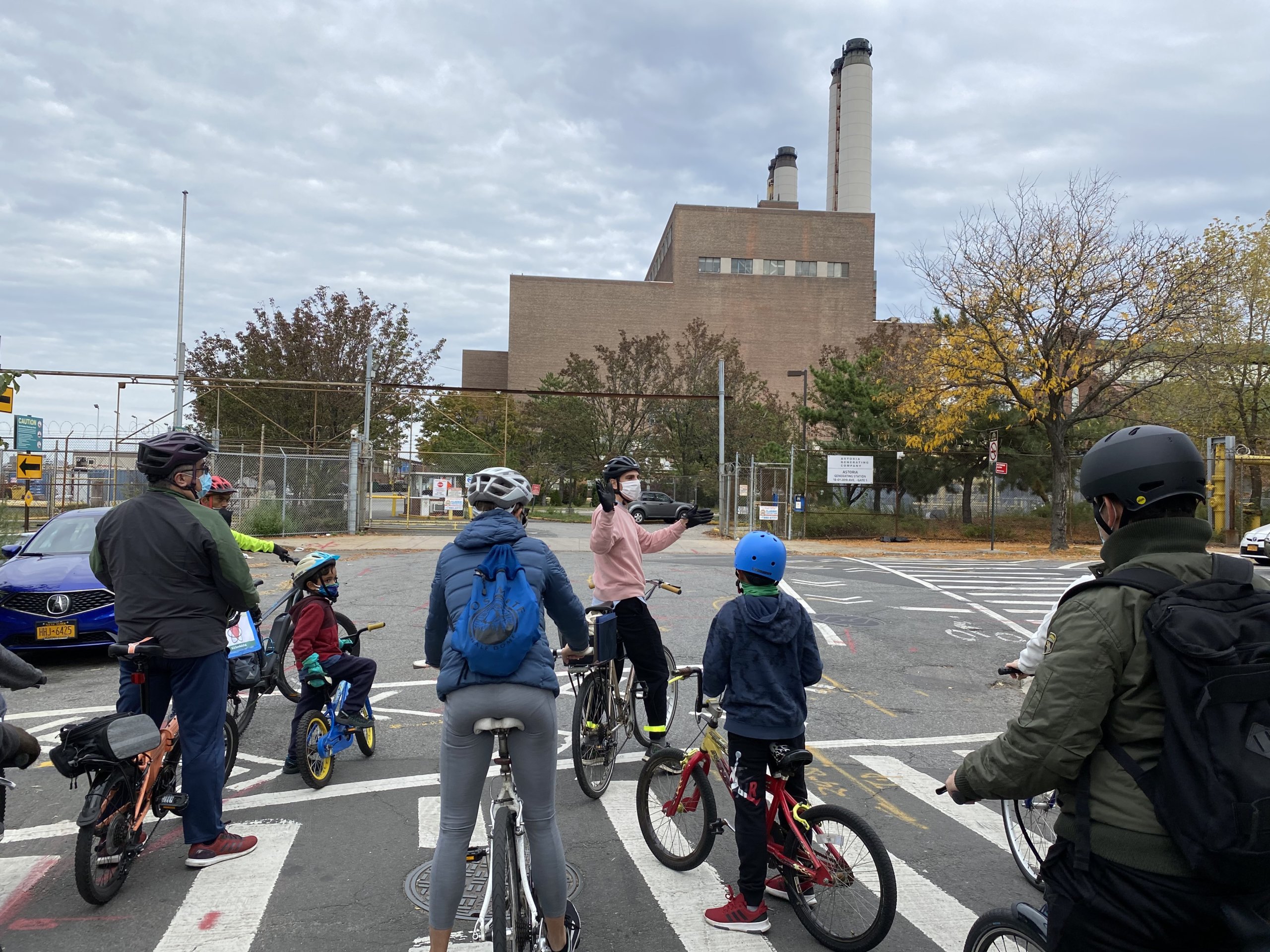
Ramos, who attended the march in protest of NRG’s proposal, said “there is no reason why we should have to adhere to that plan when it’s no longer the best possible option for our neighbors in Queens.”
Assembly candidate for District 36 Zohran Mamdani, who attended the previous NRG protest, and Constantinides also attended the rally.
Constantinides said western Queens provides 55 percent of the city’s power, but “that comes a cost.”
“We’re number one in the thing we really don’t want to be number one in. Back in 2012, they tore down the Poletti plant, the most polluting plant in all of New York State, and sadly we’re still number one in that what replaced it as the worst power plant in New York State is Ravenswood,” said Constantinides. “The ZIP Codes 1101, 1102 and 1106, which happen to house Queensbridge Houses, Ravenswood Houses and Astoria Houses […] have higher than the borough average asthma rates, and these power plants that NRG is proposing continue to burn in our backyards, continuing to make us sick — but not just that, as we saw on the COVID crisis, if you have underlying conditions, you are more likely to die from COVID. So the same Black and Brown communities that were suffering from high asthma rates are the same communities that were dying from COVID.”
“I love this community so much and I don’t want to leave, I want to raise my child here, but both of my landlords who have lived here their whole lives have asthma, I have asthma — I don’t think that’s a coincidence,” said Bibiloni. “So many people that live on our block have asthma or [Chronic obstructive pulmonary disease] COPD or different kinds of breathing issues. The ridiculous thing is that we have known that these kinds of emissions cause these kinds of health problems for so many years, but why is nothing being done about it?”




